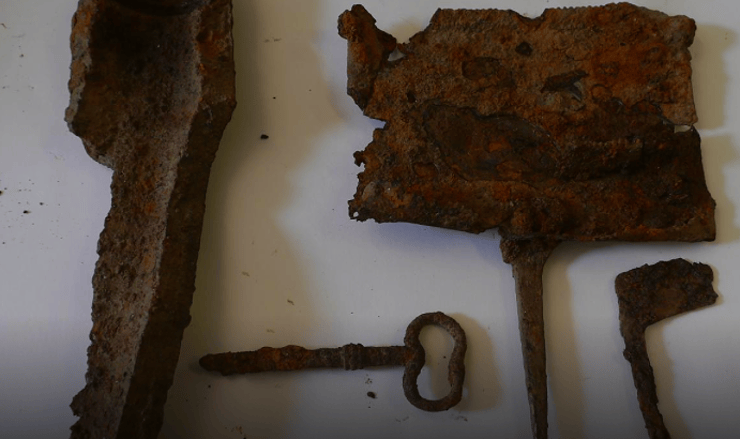Vůbec nevím k čemu tohle někomu bude,nechal bych to místo na pokoji.
5. 5.2015 Objects of the original inhabitants found in burned Ležáky
Categories: Second World War , Calendar

In the village of Ležáky, burned by the Nazis, archaeologists have managed to find objects that belonged to the original inhabitants. In a buried cellar, they found a nail for a horse or a key. In addition, a shrapnel from a grenade.
Archaeologists have been trying to obtain evidence of the burnt village for several months. They searched the original cellars. They drew on maps left in the 1940s by the company responsible for the destruction of the destroyed village. Without these documents, the archaeologists wouldn't have known where to dig.
They even managed to find things older than the period when the village was burned by the Nazis. For example, fragments of tiles and shards of glass vessels from the 16th and 17th centuries. The cellar was plotted near Švand's mill.
"We agreed that two probes would be made and we tried to uncover the soil. This is actually the first archaeological survey that has ever been carried out in Ležáky," Kamila Chvojková from the Ležáky Memorial revealed at the time.
Archaeologists also discovered a shrapnel of an 88 mm artillery shell at the site. It documents how the Nazis liquidated the cellars under the burnt houses. Archaeologists have been uncovering the ancient past of Ležáky together with historians and documentary filmmakers.
According to the director of the film Ležáky 42, Miloš Pilař, the Nazis blew up the cellar pyrotechnically, which is why such a large fragment of the grenade has been preserved. "My colleague examined the find and says it looks like a fragment of an artillery shell. We knew at that moment that this was probably the biggest historical discovery for us from 1942 to 43," Pilař recalled.
The settlement was burned down on 24 June 1942, when all 54 inhabitants, including children, were taken away by SS troops and subsequently transported to the barracks in Pardubice. The houses were looted and burned. The same evening, all the inhabitants over the age of fifteen were executed and the children were taken to the concentration camp in Chmelno. Only two of them survived the end of the war.
"This event was preceded by a hidden resistance of the local population to the German occupiers. They met regularly at the house of the miller Jindřich Švanda and it was not surprising that after the famous parachute drop they provided local facilities for radio transmissions to England," Martin Plch and Roman Plch recount the events of that time in their book Where to Go for Military Monuments.
Sources: www.ceskatelevize.cz, www.rozhlas.cz, Martin Plch and Roman Plch: Where to go for military monuments
The article is included in categories:
Post
Viky, díky za článek..... Ale jak píše Sojka88 - nikdy bych si nedovolil v takovém to místě kopat. Je to jedna z mnoha strašných tragédií Českého národa a podle mne nikdo, ani archeologové by tohle neměli vůbec dělat. Toto jsou místa, co by měla zůstat spát...... 




